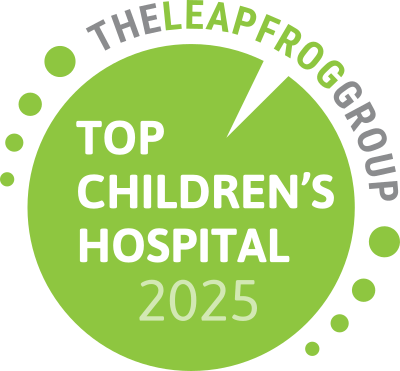New Anti-Seizure Medication for Adolescents
Cenobamate is effective in treating focal seizures in adolescents and is a viable option for those with a history of rash as a reaction to anti-seizure medications, according to an article published by Le Bonheur neuroscientists in Pediatric Neurology. This study marks the first published work on the use of cenobamate in the pediatric population. Results showed that more than 50% of patients had at least a 50% seizure reduction following the addition of cenobamate to their treatment plan.
Research was led by Le Bonheur Neuroscience Institute Summer Plus Fellow Taylor Elliott, a student at Rhodes College in Memphis, Tenn. Co-authors were Le Bonheur Medical Editor Andrew J. Gienapp, Le Bonheur Neuroscience Institute Co-Director James W. Wheless, BScPharm, MD, and Le Bonheur Psychiatric Mental Health Nurse Practitioner Tracee Ridley-Pryor, DNP, who also serves as director of Research Strategies and Collaboration for Pediatric Neurology at the University of Tennessee Health Science Center.
“In our real world study we were able to build upon prior controlled studies about the efficacy of cenobamate for treating focal seizures,” said Wheless. “Our study extends use into the adolescent age group showing its effectiveness in the pediatric population for the first time.”
Researchers performed a retrospective chart review of patients 12 years and older in Le Bonheur’s Comprehensive Epilepsy Program currently treated with cenobamate. Forty-five medication-resistant Le Bonheur epilepsy patients, who had tried an average of 12 anti-seizure medications prior to cenobamate, were treated with the medication. Of those patients, 28 also experienced a prior rash with prescribed medications.
Le Bonheur clinicians found that most adolescent patients treated with cenobamate experienced a reduction in seizure activity, were able to wean off at least one other anti-seizure medication and none developed a rash as a side effect.
Results showed that 60% of patients responded to cenobamate, obtaining at least a 50% decrease in the number of focal seizures, with 16% becoming seizure free during the study. In addition, before starting cenobamate, patients were taking an average of three anti-seizure medications, but at follow up, anti-seizure medication was decreased by at least one medication in 49% of patients. Of the study patients who previously experienced rashes with prescribed medications, none experienced a rash due to cenobamate, establishing a new treatment option for this subgroup.
“The slightly greater than 50% responder rate is especially impressive in this population, who have had documented failure to a high number of prior anti-seizure medications,” said Wheless. “Many had also undergone prior epilepsy surgery or device therapy as a treatment option. They represent some of our patients with the most difficult to control epilepsy.”
Cenobamate was able to be used alongside other anti-seizure medications, with lacosamide, cannabidiol, clobazam and felbamate being the most common. The most common side effect when adding cenobamate to a patient’s regimen was drowsiness, which could be minimized by decreasing the cenobamate dose. None of the patients discontinued cenobamate because of adverse events.
“This promising finding supports the need for extrapolation studies for children and adolescents,” said Wheless. “Further studies of cenobamate in the pediatric population are needed to determine if this is a viable treatment option for younger populations.”

Help us provide the best care for kids.
Le Bonheur Children's Hospital depends on the generosity of friends like you to help us serve 250,000 children each year, regardless of their family’s ability to pay. Every gift helps us improve the lives of children.
Donate Now
















